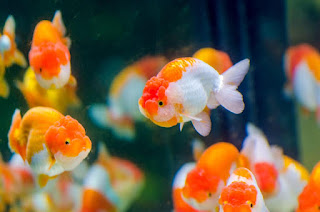What should I do if the fish has vertical scale disease? Most aquarists who keep ornamental fish find that the fish are helpless when they are sick. In order to avoid the disease of the fish, it is necessary to do daily feeding work, control the water quality and stabilize the water temperature, and do a good job in disease prevention. Vertical scale disease is also a relatively common disease in ornamental fish. How to treat vertical scale disease? Let's take a look.
Vertical scale disease is also known as vertical scale disease, pine scale disease, pine skin disease and so on.
[pathogen] is a bacterium similar to P. punctatae.
[Symptoms] The symptoms of the diseased fish are that the body surface is rough, and most of the scales at the tail part open out like a pine ball, while the scales at the base of the scales are edema, and there are translucent or blood-containing exudates accumulated inside. liquid so that the scales stand up. A little pressure is applied to the scales, and the liquid substance is ejected from the scale sac, and the scales also fall off, sometimes accompanied by congestion of the fin base and the skin surface, protuberance of the eyes, and swelling of the abdomen. Go to see the fish feed extruder machine.
Sick fish are slow to swim, have difficulty breathing, turn their bodies sideways, and their abdomens are upward, and die after 2 to 3 days. When the water quality is not clean, the light is insufficient, the water is deficient in oxygen, the feeding water temperature is too high, and when the fish scales are scratched, it is easy to suffer from this disease. Goldfish and koi often suffer from this disease, which is more prevalent in spring every year. Among tropical ornamental fish, foamy oviparous fishes such as Perchidae, Bettaidae and Killiidae are often affected by this disease. The disease is difficult to cure, and even after it is cured, the color, luster, and posture are not as good as before.
[Treatment method] The diseased fish can be immersed in a tetracycline solution with a concentration of 1/50,000 unit for 1 hour; 2% sodium chloride solution and 3% sodium bicarbonate solution can also be mixed for 10 minutes; or chloramphenicol It can also be diluted with 1% of the above liquid and sprayed into a low dose, and it can be effective for several days after adhering to it.
So welcome to see the lima feed machines.






